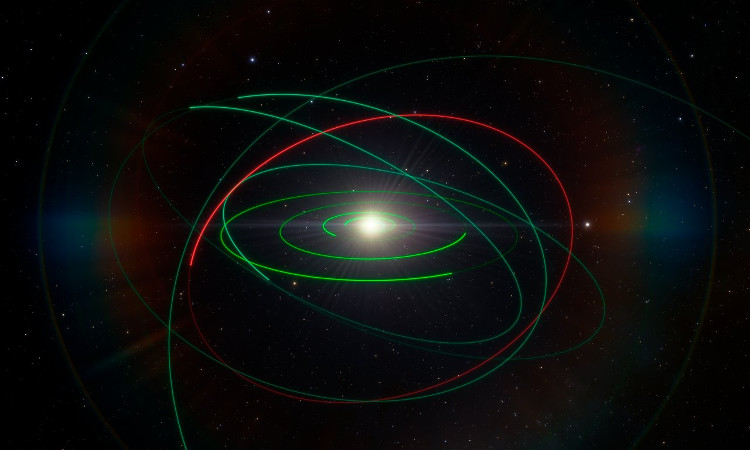Discover an asteroid outside the Solar System
Astronomers have discovered an asteroid outside the Solar System through large telescopes and telescopes located at the Cerro Paranal observatory, 1,200 kilometers north of Santiago, Chile.
According to a reporter in South America, in the May 10 announcement, the Southern European Observatory (ESO) said the "unique and mysterious" asteroid is called 2004 EW95 , 4 billion kilometers from Earth and many the ability to form in the belt between Mars and Jupiter. The asteroid may also have been pushed billions of kilometers from where it began to form until the area now discovered.

This asteroid is more likely to be formed in the belt between Mars and Jupiter.
The discovery of the asteroid 2004 EW95 played an important role in helping astronomers discover the early formation of the Solar System.
The team of scientists at Queen's University Belfast, UK, said the object in the upper Kuiper belt is the first planet discovered in the icy periphery of the Solar System and very rich in carbon. Scientist Tom Seccull, the lead researcher, hypothesized the possibility of another moving planet pushing 2004 EW95 into the current orbit in the early days of the Solar System's formation.
With modern devices, the team observed details of the light reflection model from 2004 EW95, thereby hypothesizing the composition of the asteroid.
The Kuiper belt is a halo-like glacier that opens from Neptune to about 55 times longer than the Sun than the Earth. It is thought to be a remnant of collisions that lead to the formation of asteroids.
- What is asteroid?
- Discover the oldest solar system outside the solar system
- Approaching the planet may have life
- Asteroid Vesta 'very similar to the Earth
- Interesting things about the solar system
- Japan is about to drop the last robot on the asteroid
- Discover the nearby neighborhood of the solar system
- Video: Compare the size of the big mountains in the Solar System
- 10 interesting things about asteroids in the solar system
- Detecting an asteroid has two surrounding rings
- The first interstellar object in the solar system 4.5 billion years
- New discoveries about the Female Star
 Van Allen's belt and evidence that the Apollo 11 mission to the Moon was myth
Van Allen's belt and evidence that the Apollo 11 mission to the Moon was myth The levels of civilization in the universe (Kardashev scale)
The levels of civilization in the universe (Kardashev scale) Today Mars, the sun and the Earth are aligned
Today Mars, the sun and the Earth are aligned The Amazon owner announced a secret plan to build a space base for thousands of people
The Amazon owner announced a secret plan to build a space base for thousands of people